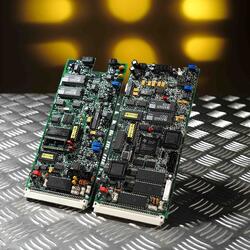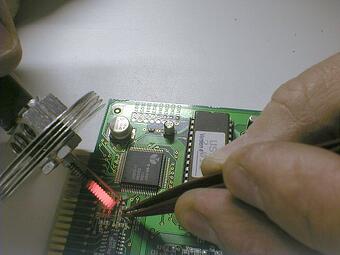 If you've ever wondered how it is that electronic devices can continually shrink in size, Surface Mounting Technologies (SMT) are largely to thank. This continually-evolving set of manufacturing techniques allows electronics to be created which are superior to alternative manufacturing methods in numerous ways.
If you've ever wondered how it is that electronic devices can continually shrink in size, Surface Mounting Technologies (SMT) are largely to thank. This continually-evolving set of manufacturing techniques allows electronics to be created which are superior to alternative manufacturing methods in numerous ways.
What makes SMT different is that it allows individual components to be placed directly onto the circuit board, without the need for sending wires through to the other side.
The Basics Of Surface-Mounted Electronics Manufacturing
What makes SMT special is the use of solder paste to hold the components in place. This paste is a combination of traditional solder -in microbeads- suspended within a sticky resin-like material called flux. The resulting paste is, effectively, a highly conductive glue.
So an SMT manufacturing process begins with a bare printed circuit board, which has wiring pre-applied to the board along with conductive pads which are usually made with gold or a tin-lead alloy, where the components will go. The board is then sent through a screen-printing process that applies solder paste to the solder pads, without touching the rest of the board.
Following that, robotic pick-and-place machines on a conveyor belt quickly apply the right components in the right places, which are held in place by the sticky paste. One of the benefits of SMT is that it allows these pick-and-place machines to be relatively imprecise. Due to surface tension, the soldering paste will hold its component in the proper position.
Once the components are placed, the board goes into an impressive piece of machinery called a reflow soldering oven, where the circuit board is literally baked for several minutes. This melts the solder microbeads, causing them to mix freely with the flux, before a cooling processes causes the entire paste to harden into a strong crystalline structure.
If the circuit board is intended to be dual-sided -another feature that only SMT can produce- it then goes back through the same process, for the other side.
Finally, the circuit board is washed and inspected visually by a human worker for any defects. If it passes inspection, it's ready for a build.
The Benefits Of Surface-Mounting Technologies
There are a remarkable number of benefits to SMT-based manufacturing.
- Much smaller circuit boards can be made, and they're getting smaller every year as SMT machinery becomes increasingly precise.
- As mentioned above, dual-sided circuitry is possible.
- Few holes have to be drilled. More drilling increases the chances of breaking the board mid-assembly.
- Faster robotic circuit assembly. SMT processes can produce upwards of 100,000 boards per hour.
- A high resistance to shaking and vibrations, due to the crystalline bonds formed by the solder paste. This is critical as devices today often feature vibration feedback.
- Lower setup and manufacturing costs.
- Less RF noise and other electromagnetic interference.
- Faster prototyping.
In fact, there are really only two major areas where older techniques are still used. First, SMT provides strong resistance to vibration, but holds up poorly to direct mechanical stress, such as a USB port experiences. Also, for obvious reasons, high heat buildup can melt the solder.
ZenTech manufacturing utilizes the latest in SMT production techniques to create printed circuit boards which are smaller, lighter, and packed more tightly with components. For more information on our cutting-edge processes, please contact ZenTech with your questions.





